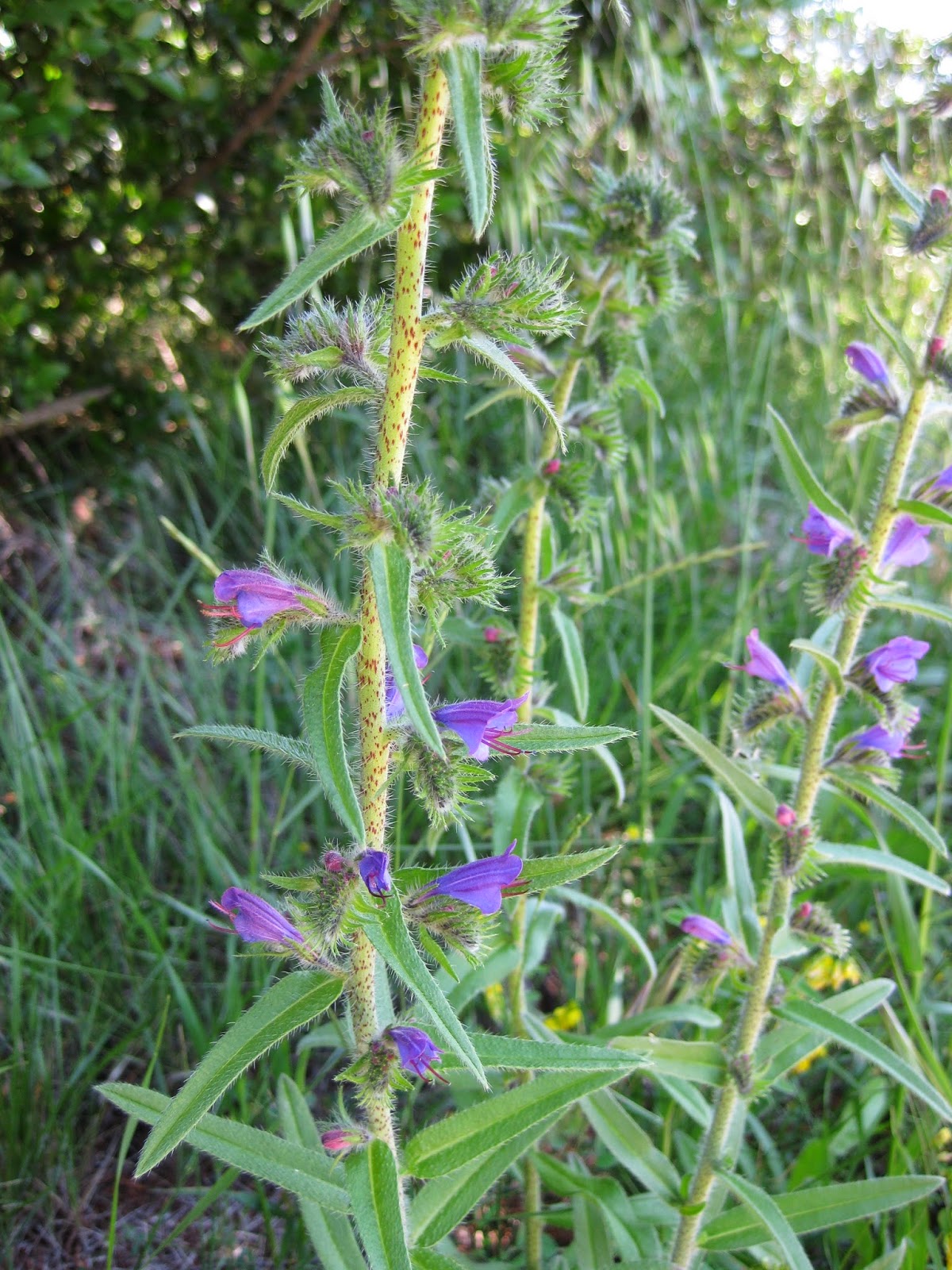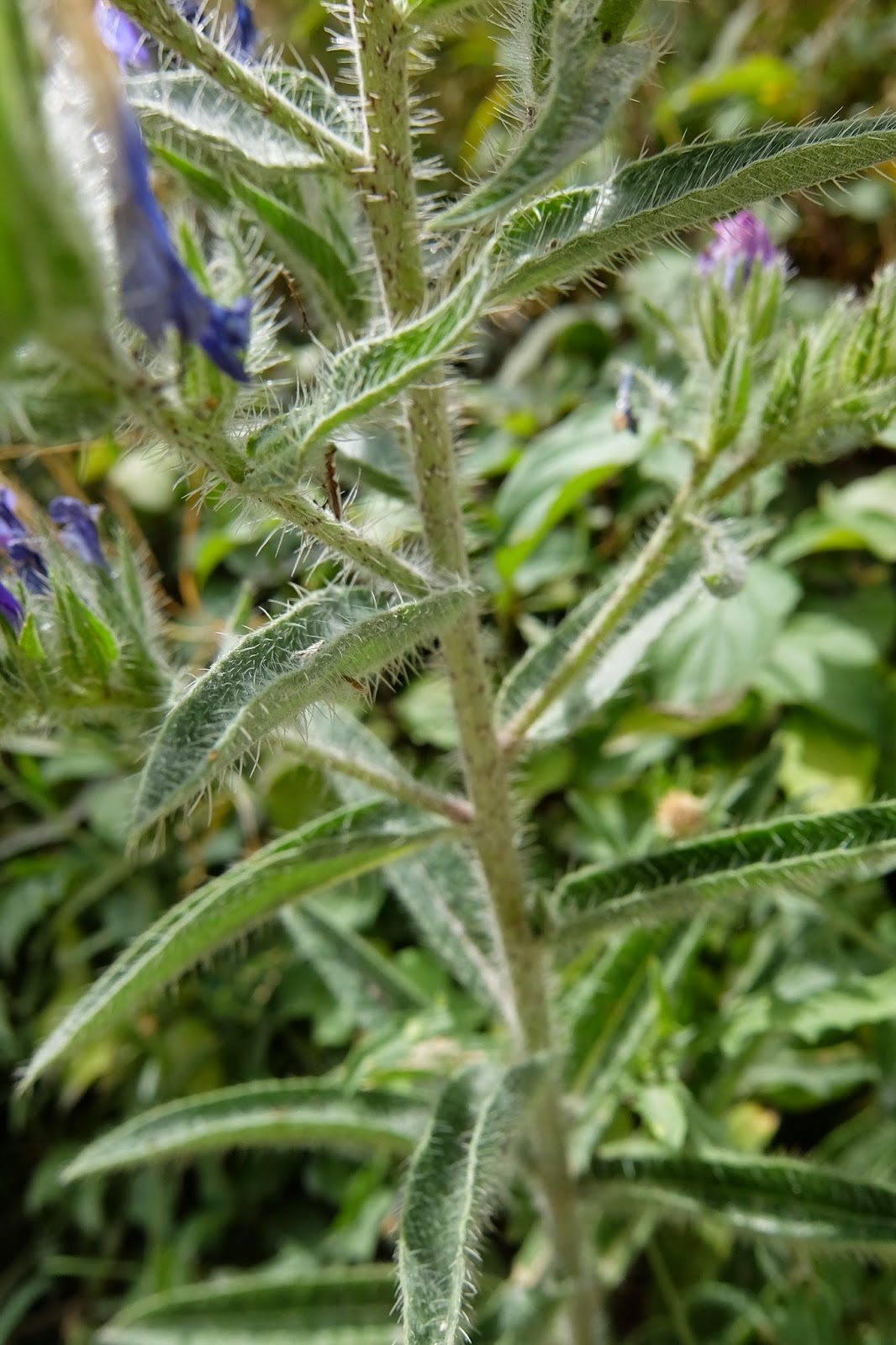Viper’s Bugloss
Vipèrine commune
One of the best plants for attracting honeybees. The
plant produces nectar throughout the day. The structure of the corolla protects the nectar inside
from vaporization during the heat of the day and from rainfall flushing it out. The blossoms start out pink and turn blue/violet as they age.
Native to southern Europe
Once
considered as a preventative and remedy for viper/snake bites; also was used as
an infusion to soothe coughsFlowers May through September
 |
Stem 5.22.13
Leaves: rough, hairy, lanceolate
|
 |
Bloom 5.22.13
Each flower has protruding red stamens
|
 |
In Situ 5.22.13
Edge of a vineyard near Bonnieux, Luberon
|
 |
| Stem, leaves in fall. 9.16.14 |
 |
| Bee collecting nectar in fall, 9.16.14 |
 |
| In situ, Lacoste field in fall.9.16.14 |
No comments:
Post a Comment